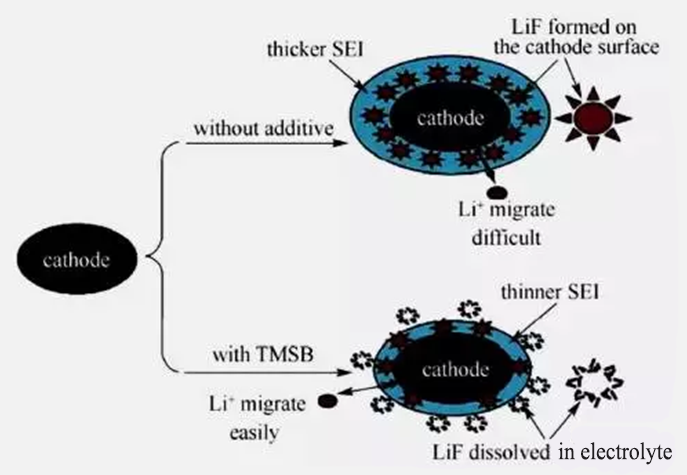Although high-voltage lithium battery materials are getting more and more attention, these high-voltage anode materials are still unable to achieve good results in practical production and application. The biggest limiting factor is that the electrochemical stability window of the carbonate-based electrolyte is low. When the battery voltage reaches about 4.5(vs.Li/Li+), the electrolyte begins to produce violent oxidation decomposition, causing the lithium-intercalation and lithium-deintercalation for the battery not working properly. The development of electrolytic liquid systems that can withstand high voltage is an important step to promote the application of this new material.
The development and application of new high voltage electrolyte systems or high voltage film forming additives to improve the stability of electrode/electrolyte interface is an effective way to develop high voltage electrolyte. Economically, the latter is often preferred. Such additives to improve the voltage tolerance of electrolyte generally include boron, organic phosphorus, carbonates, sulfur, ionic liquids and other types of additives. Boron additives include trimethylalkanes borase, lithium borate dioxalate, lithium borate difluoroxalate, tetramethylborate, trimethyl borate and trimethylcyclotriboroxane. Organic phosphorus additives include phosphite esters, phosphite esters. Carbonate additives include fluorinated anhydryl compounds. Sulfur-containing additives include propionic acid lactone, dimethyl sulfonyl methane, trifluoromethyl phenyl sulfide, etc. Ionic liquid additives include imidazole and quaternary phosphate salts.

According to the domestic and foreign studies that have been published, the introduction of high-voltage additives can make the electrolyte withstand the voltage of 4.4-4.5v. However, when the charging voltage reaches 4.8v or even more than 5V, it is necessary to develop the electrolyte that can withstand higher voltage.